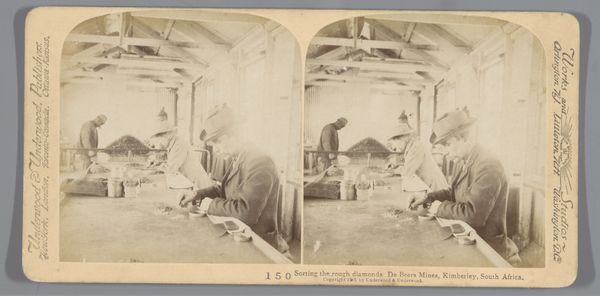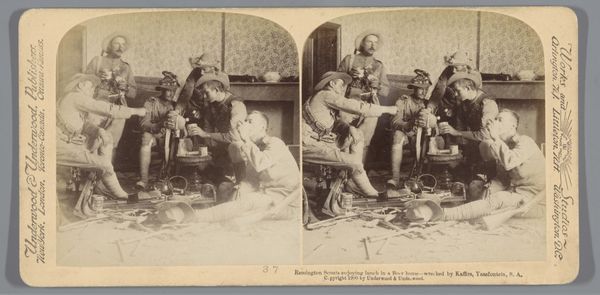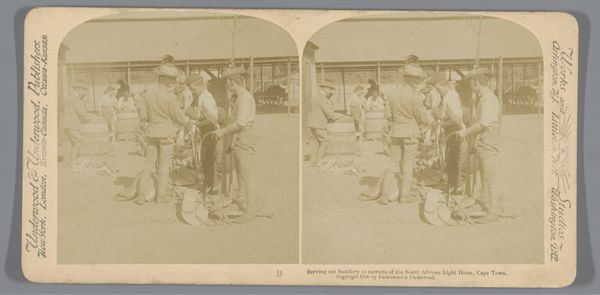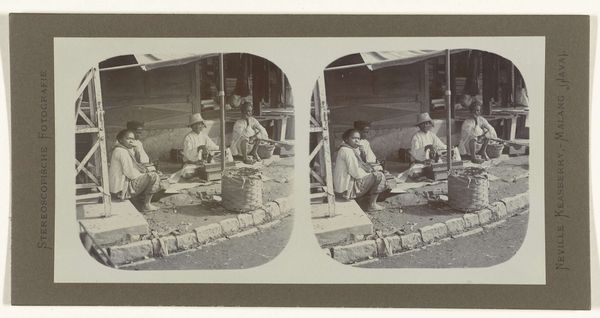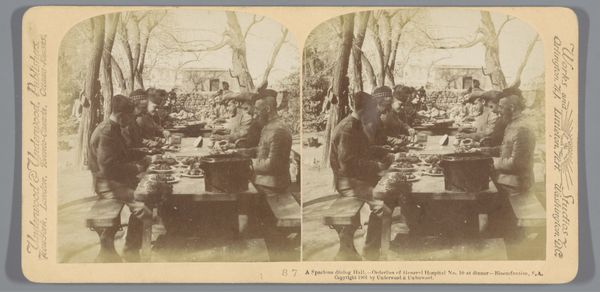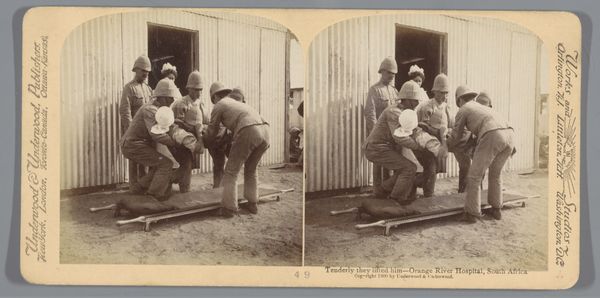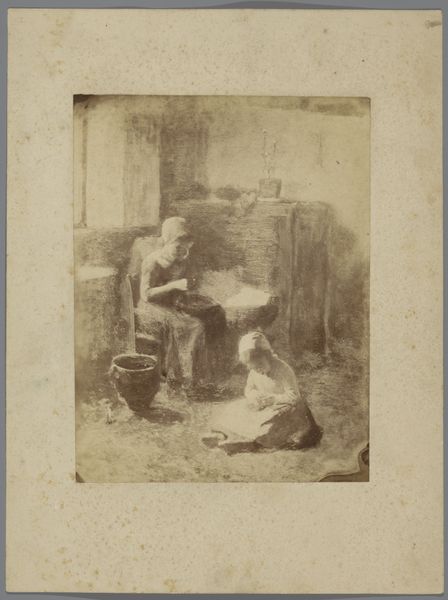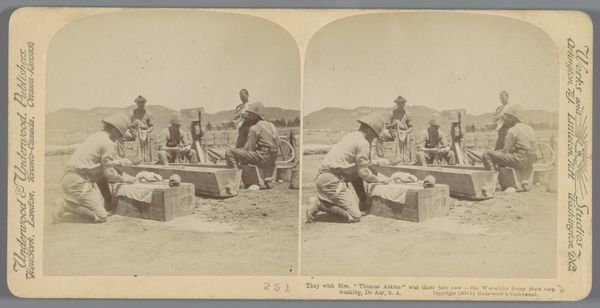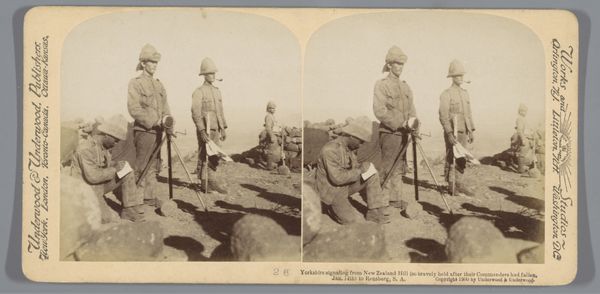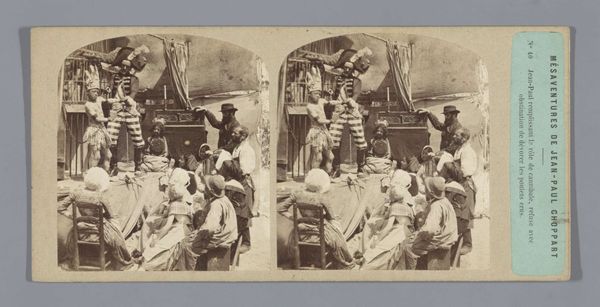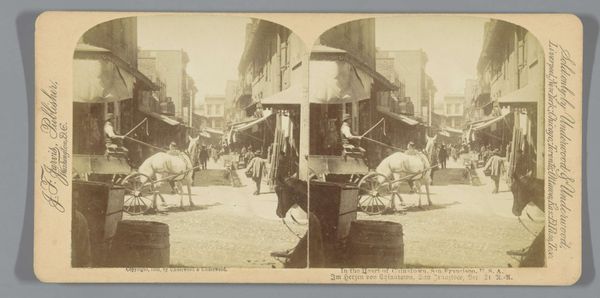
Vier soldaten tillen een zwaargewonde soldaat achterin een koets bij de Modderrivier, Zuid-Afrika 1900
0:00
0:00
print, photography, gelatin-silver-print
# print
#
photography
#
gelatin-silver-print
#
genre-painting
#
history-painting
#
realism
Dimensions: height 88 mm, width 178 mm
Copyright: Rijks Museum: Open Domain
Editor: Here we have an albumen print titled "Four soldiers lifting a seriously wounded soldier into a carriage at the Modder River, South Africa," dating back to 1900. The somber scene and its stark black and white palette evoke a sense of immediacy. What’s striking is how this photograph transforms a mundane act of war into an allegory. What aspects of the production and making do you find most significant? Curator: Well, considering this gelatin-silver print, think about the materiality itself. The silver, light-sensitive emulsion layered on paper allowed for mass production of these images. They were cheaply circulated and widely consumed. Consider the labor involved in not just creating the photograph, but in its reproduction, distribution, and consumption. And how that intersects with ideas of empire. Editor: That makes me wonder, do you think the photograph’s mass production cheapens the suffering it depicts, reducing these individuals to commodities? Curator: It's a crucial point. The mass production *is* the message, in some ways. It feeds the visual consumption of war. The photographer, perhaps unwittingly, becomes a cog in the military-industrial machine. This wasn’t created as a unique artwork; it was part of a larger propaganda effort, demonstrating industrialised distribution networks supporting colonial adventures. Consider, who profited most from images like these? The photographers? The publishing houses? Or the war effort itself? Editor: It’s sobering to consider the layers of industry and economics inherent in something that appears to be a simple portrayal of human suffering. I never really considered the commercial dimension until now. Curator: Exactly! Focusing on the material conditions of its creation helps us understand the social and political contexts that gave it form and meaning.
Comments
No comments
Be the first to comment and join the conversation on the ultimate creative platform.
